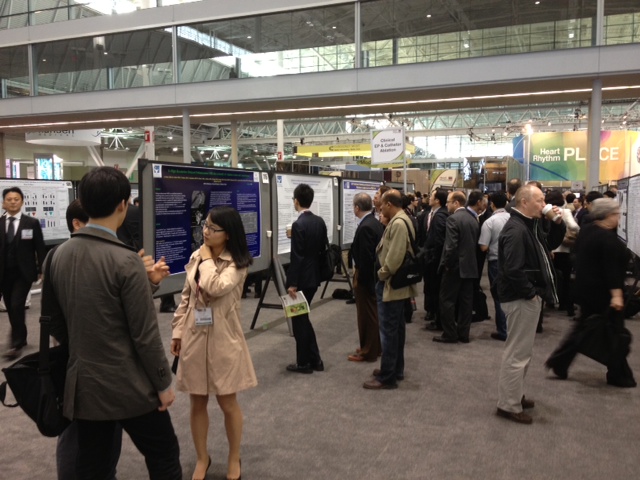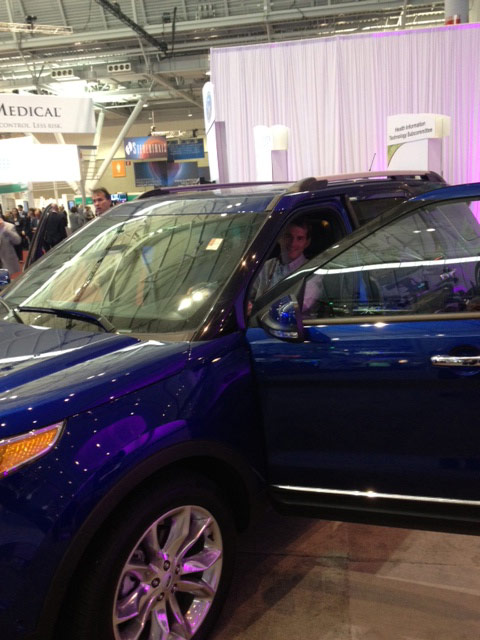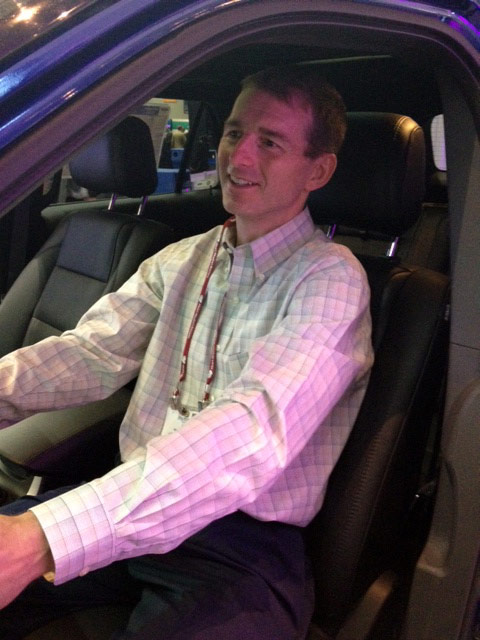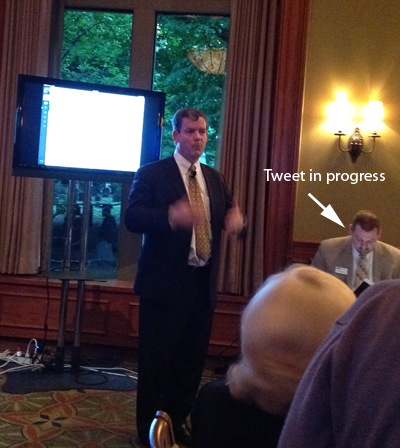 |
| HRS 2012 Poster Session |
But I also noted another trend: the number of attendees from overseas compared to those from the US. It was pretty cool to walk through the poster sessions and listening to the people from Germany, the Netherlands, China, Japan, England represented. Sure there were plenty of US doctors, too, but it seemed the proportion of US doctors was less compared to earlier years - as if it’s become too expensive for our own doctors to attend but prevalent industry sponsorship for foreign doctors remains. (Just a hypothesis)
On Wednesday I attended and live-tweeted the Atrial Fibrillation Symposium. (Here's an interactive map of ALL of the the tweets with the hashtag #hrs2012 – click on my “node” to see my list of tweets and scroll down). The event was VERY well-attended (sold out, I think) and had pearls from many of yesterday’s and tomorrow’s leaders in our field packed in a very short period of time. Clearly the work of Sanjiv Narayan, MD from San Diego VA, originally presented at last year’s Scientific Sessions via the preliminary CONFIRM trial, was a standout. His physiologically-based ablation approach (identifying and targeting the mechanism of the arrhythmia using FIRM (Focal Impulse and Rotor Modulation) mapping), rather than a strictly anatomically approach, was intriguing. I discussed the mapping system with other physicians who had used the system from U of Indiana and Ohio State and they shared similar excitement. The technique is not without its skeptics, however, but the initial reports from others with some limited experience suggested “it’s real” and “doesn’t work on everybody but seeing persistent afib stop with ablation is pretty common.” The mapping system is being marketed by Topera Medical.
Staying at the Seaport Hotel in Boston, while lovely, proved very interesting. At 2 am early Thursday morning, I was woken from a sound sleep by a fire alarm saying "This is NOT a drill." After gathering my cellphone and donning enough clothing to be presentable, I proceeded down the stairs 16th floor (!) with other bedraggled hotel patrons. I couldn't help but think how ironic it was that I came to Boston to escape my pager only to be awakened like this! Seeing folks in their robes, t-shirts, nightgowns all huddled beneath a neighboring building's overhang was somewhat comical and the light show created by the stairway alarm strobes was captured (Quicktime movie, 500K - turn your head sideways) by yours truly and proved quite entertaining. (No, those are not defibrillator firings!) Fortunately, the hotel soon received an "all clear" from the fire department.
The following morning (Thursday), the Riata lead recall updates were presented. Needless to say, I didn't quite make that packed session early enough. Edward J. Schloss, MD (@EJSMD) live-tweeted this event for us. (Click on his “node” on the above Twitter graphic to display). Ultimately, many people wanted to know how likely St. Jude Medical’s later-generation defibrillator lead, the Durata, might fare since it shares some of the design characteristics with the Riata family of leads. Enter Charles (Chuck) Love, MD whose presentation went far at allaying many of those fears, at least for now.
My late Thursday morning was spent discussing and planning a possible social media session at the 2013 Heart Rhythm Society Meeting in Denver, CO with Kevin Campbell, MD (his reflections on HRS can be found here) and John Mandrola, MD – two guys I had known from social media circles but had never met face-to-face. There was lots to consider and some buy-in still needed from the Heart Rhythm Society, but so far the interest appears strong. As we move forward in this endeavor, input from others is welcome as we try to construct a session and perhaps a how-to hands-on breakout session on how to use social media for information feeds, marketing and professional collaboration.
 |
| Cars at Scientific Sessions? |
 |
| John Mandrola, MD |
 |
| Dr, Wes in action |
Friday was filled with more sessions: left atrial appendage occluding devices, a few talks of the newer anticoagulants and anti-arrhythmic choices for people with atrial fibrillation, and a lively debate on the pros and cons of cryoballoon ablation catheters from the folks from Germany nicely rounded out the meeting. Then, before I knew it, it was time to head back to the airport.
So there you have it: a brief synopsis of what I felt was a very interesting and interactive scientific session this year. Thanks to everyone who made it such a great affair!
-Wes
No comments:
Post a Comment